Transporting fishing rods can be a daunting task for both novice and seasoned anglers. Whether you’re planning a weekend getaway to your favorite fishing spot or embarking on a long-distance fishing expedition, knowing how to transport fishing rods safely and conveniently is essential. This comprehensive guide provides you with practical tips, various transportation methods, and essential tools to ensure your fishing gear arrives intact and ready for your next adventure.
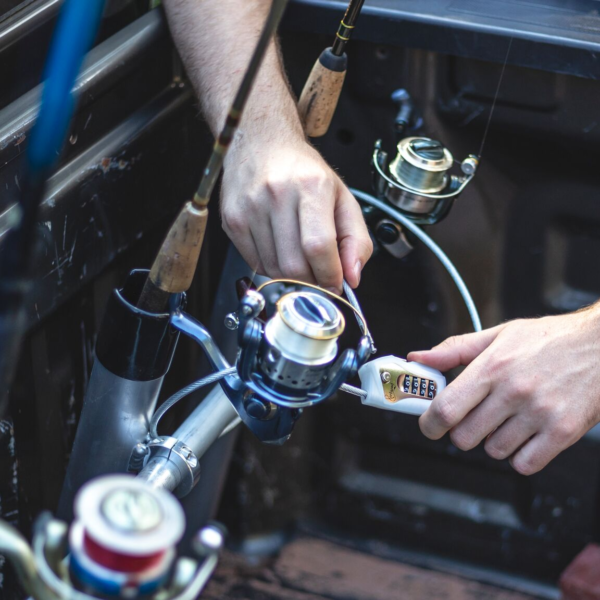 Choosing the Right Transportation Method
Choosing the Right Transportation Method
Selecting the appropriate method to transport your fishing rods depends on several factors, including the distance, mode of travel, and personal preferences. Here, we explore the most common transportation options to help you make an informed decision.
Traveling by Car
Traveling by car is one of the most popular ways to transport fishing rods due to its convenience and flexibility. Here’s how to make it safe and efficient:
Use a Rod Holder
A rod holder is a must-have accessory for car transportation. It securely holds your fishing rods in place, preventing them from moving around during the drive. Invest in a high-quality rod holder that fits your vehicle’s interior and accommodates the number of rods you intend to carry.
Invest in a Good Rod Case
If you prefer extra protection, consider using a rod case. Rod cases come in various styles, including hard-shell and soft-shell options. They offer superior protection against impacts, moisture, and other environmental factors. Additionally, rod cases protect your rods from getting tangled or damaged by other items in the car.
Utilize Vertical Storage
If space permits, store your fishing rods vertically in the car. This method minimizes the risk of damage and makes it easier to access your rods when needed. Use padding or foam inserts to cushion the rods and prevent them from coming into contact with hard surfaces.
Flying with Fishing Rods
Flying with fishing rods requires careful planning and adherence to airline regulations. Follow these steps to ensure a smooth experience:
Check Airline Policies
Before booking your flight, review the airline’s policies regarding fishing equipment. Different airlines have varying rules about the size, weight, and packaging of fishing rods. Some may allow rods as part of your checked baggage, while others might require them to be packed separately.
Choose the Right Packing Method
When flying, a rod case is indispensable. Opt for a hard-shell case for maximum protection against rough handling. Alternatively, use a padded soft-shell case if you prefer a lighter option. Ensure that the case is sturdy and provides adequate protection for your rods.
Label and Secure Your Gear
Clearly label your rod case with your contact information. Use sturdy straps or locks to secure the case and prevent it from opening during transit. Adding hard material within the case provides additional protection against impacts.
Public Transportation and Moving by Ship
Public transportation and shipping require specialized approaches to transport fishing rods safely.
Use Specialty Cases
For public transportation, lightweight and compact rod cases work best. Look for cases with reinforced edges and secure closures to protect your rods from bumps and jostles.
Invest in Fragile Stickers
When shipping your fishing rods, mark the packages with “Fragile” stickers to alert handlers to handle them with care. This simple step can significantly reduce the risk of damage during transit.
Choose Reliable Shipping Services
Select a reputable shipping company that offers tracking and insurance options. This ensures that your fishing rods are monitored throughout the journey and protected against loss or damage.
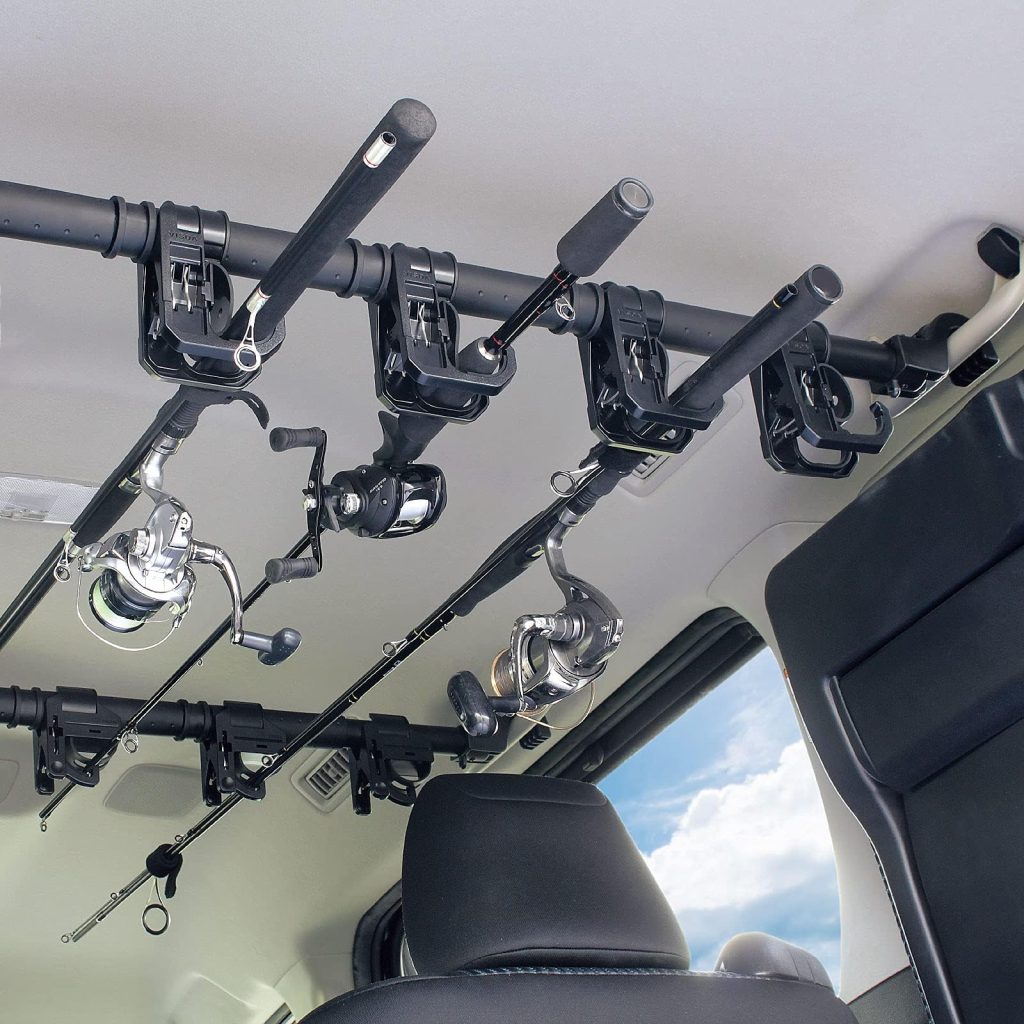 Essential Tools and Accessories for Transporting Fishing Rods
Essential Tools and Accessories for Transporting Fishing Rods
Having the right tools and accessories can make transporting fishing rods easier and more efficient. Here are some must-have items to consider:
Rod Binders and Straps
Rod binders and straps help organize and secure multiple fishing rods, preventing them from tangling or causing damage during transport. These accessories are especially useful when carrying several rods in a single container or vehicle.
Padding and Foam Inserts
Adding padding or foam inserts to your rod case provides extra protection against impacts and vibrations. This cushioning helps absorb shocks, keeping your rods safe from potential damage.
Travel Bags and Backpacks
Travel bags and backpacks designed specifically for fishing rods offer convenience and portability. These bags often feature multiple compartments, allowing you to organize your rods, reels, and other gear efficiently.
Rod Sleeves
Rod sleeves provide an additional layer of protection for individual rods. They are lightweight and easy to use, making them a practical option for preventing scratches and minor impacts.
Tips for Safe and Efficient Transportation
Ensuring the safe transportation of your fishing rods involves more than just selecting the right method and accessories. Follow these practical tips to enhance the safety and efficiency of your transport process.
Plan Ahead
Planning ahead is crucial for a hassle-free experience. Map out your route, check weather conditions, and ensure that your transport method is suitable for the trip. Planning minimizes last-minute challenges and ensures that your fishing rods remain protected throughout the journey.
Pack Smartly
Organize your fishing rods and gear thoughtfully inside your chosen carrier. Place heavier items at the bottom and lighter ones on top to prevent unnecessary pressure on your rods. Avoid overpacking to maintain the structural integrity of your transport case.
Protect the Rod Tips
The tips of fishing rods are particularly vulnerable to damage. Use protective caps or foam covers to shield the tips from impacts and abrasions. This small precaution can prevent costly repairs and maintain the longevity of your rods.
Avoid Extreme Temperatures
Extreme temperatures can damage fishing rods, especially those made of sensitive materials. Whenever possible, avoid leaving your rods in areas with high or low temperatures for extended periods. Store them in a climate-controlled environment to prevent warping or weakening of the materials.
Check for Secure Fit
Before setting off on your journey, double-check that all components of your transport setup are secure. Ensure that rods are tightly held in place and that cases are properly closed. A secure fit minimizes the risk of rods shifting or falling during transit.
Overcoming Common Challenges
Transporting fishing rods can present various challenges, but with the right strategies, you can overcome them effectively.
Handling Bumps and Jostles
Bumpy roads and unexpected stops can cause fishing rods to move around, increasing the risk of damage. To counter this, use extra padding inside your rod case and secure the case firmly in place within your vehicle. Additionally, use rod holders that offer adjustable grips to accommodate different rod sizes and prevent movement.
Managing Tight Spaces
Finding space for fishing rods in a crowded vehicle can be tricky. Opt for compact and streamlined rod cases that maximize space efficiency. Alternatively, consider using vertical storage solutions that utilize unused areas, such as the back of seats or trunk spaces, without taking up much room.
Protecting Against Weather Elements
Weather can significantly impact the safety of your fishing rods. Use weather-resistant cases or covers to protect your rods from rain, snow, and humidity. Additionally, incorporate moisture-absorbing materials, like silica gel packs, to prevent rust and mold growth.
Ensuring Compliance with Regulations
When transporting fishing rods across state lines or internationally, ensure compliance with relevant regulations. Some areas have specific rules regarding fishing equipment, including permits and restrictions. Research and adhere to these regulations to avoid legal issues and ensure a smooth trip.
Innovative Solutions for Modern Transport Needs
Advancements in technology and design have introduced innovative solutions that simplify transporting fishing rods. Here are some of the latest options to consider:
Modular Rod Cases
Modular rod cases offer customizable storage solutions, allowing you to adjust the compartments based on the number of rods and gear you need to carry. These cases provide flexibility and adaptability, making them ideal for anglers with varying transport needs.
GPS-Enabled Tracking
Some high-end rod cases come equipped with GPS tracking capabilities. This feature allows you to monitor the location of your fishing rods in real-time, providing peace of mind during long journeys or when shipping your gear.
Lightweight and Durable Materials
Modern rod cases are made from lightweight yet durable materials like advanced polycarbonates and reinforced fabrics. These materials offer superior protection without adding excessive weight, making transportation easier and more efficient.
Integrated Wheels and Handles
For anglers who prefer portability, rod cases with integrated wheels and handles offer a convenient way to transport fishing rods. These rolling cases reduce the strain of carrying heavy loads and simplify navigation through crowded areas or uneven terrain.
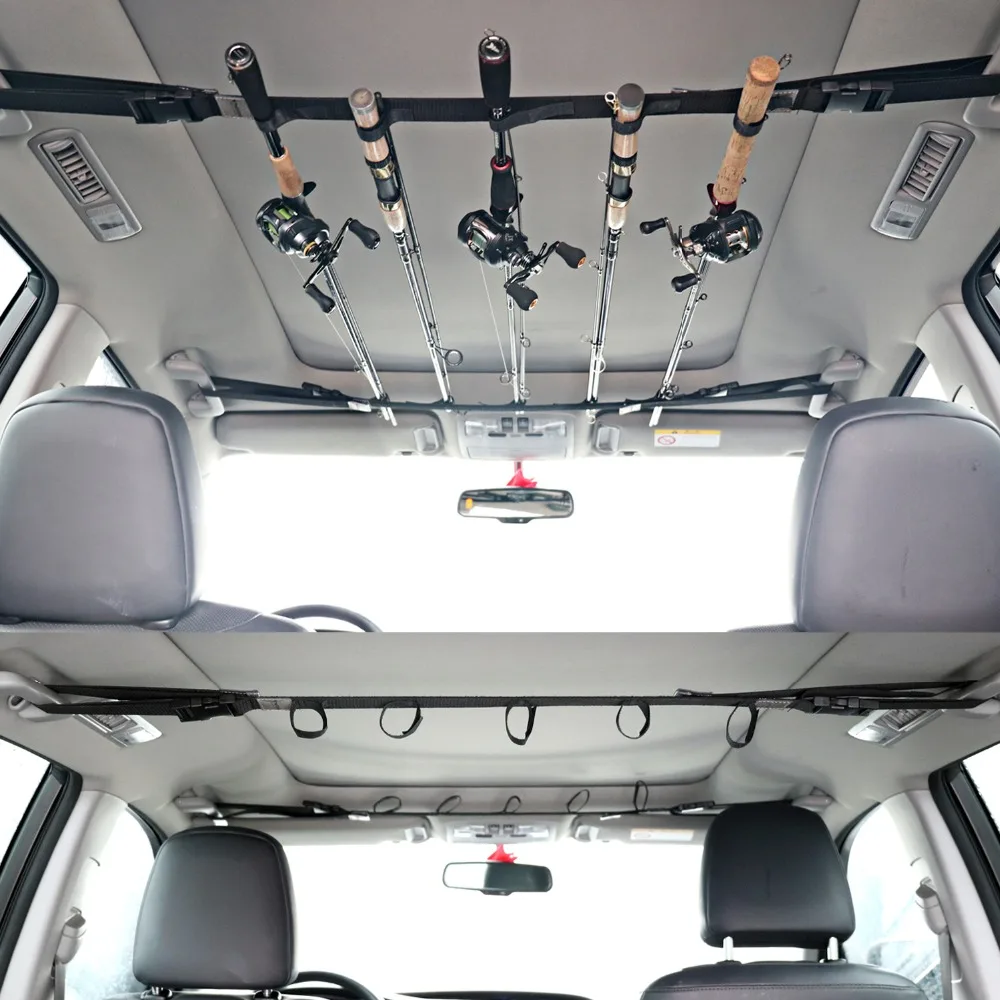 How to Transport Fishing Rods by Air
How to Transport Fishing Rods by Air
How to transport fishing rods? Transporting fishing rods by air involves additional considerations to ensure they arrive safely at your destination.
Selecting the Right Airline
Different airlines have varying policies regarding the transport of fishing rods. Some may treat them as standard checked luggage, while others might require them to be declared as sporting equipment. Check the specific regulations of the airline you plan to fly with to avoid unexpected fees or issues at the airport.
Packing Tips for Air Travel
When flying, use a hard-shell rod case to provide maximum protection. Disassemble the rods if possible to fit them more securely within the case. Clearly label the case with your contact information and include a copy of your itinerary inside the case in case the exterior labels are damaged or lost.
Understanding Baggage Fees
Be aware of potential baggage fees associated with transporting fishing rods by air. These fees can vary based on the size and weight of your rod case. To minimize costs, compare different airlines’ fee structures and consider booking a seat for your rod if allowed by the airline’s policies.
Transporting Fishing Rods Safely Over Long Distances
Long-distance transportation of fishing rods requires extra precautions to ensure they remain in excellent condition throughout the journey.
Use Reinforced Cases
For long-distance trips, choose rod cases with reinforced exteriors and interiors. These cases offer enhanced protection against rough handling and environmental factors, ensuring your rods stay safe over extended periods.
Secure During Transit
Ensure that your rod case is securely fastened during transit. Use additional straps or restraints to keep the case stationary within your vehicle or shipping container. This prevents excessive movement and reduces the risk of damage.
Monitor Environmental Conditions
Over long distances, environmental conditions can fluctuate significantly. Use temperature-resistant cases or insulated covers to protect your fishing rods from extreme heat or cold. Additionally, consider using waterproof cases if traveling to areas with high humidity or frequent rain.
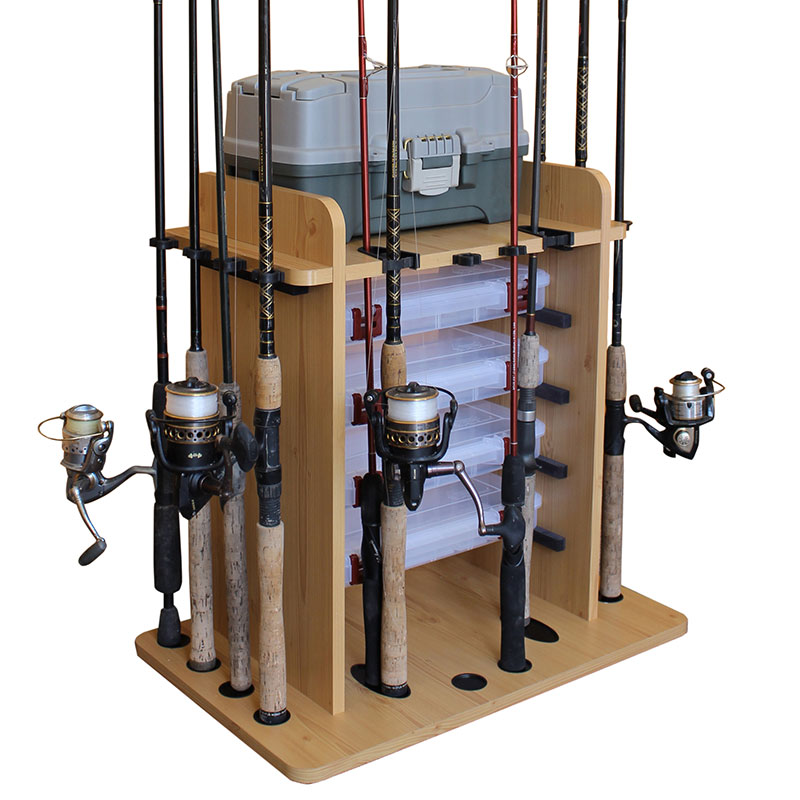 Frequently Asked Questions About How to Transport Fishing Rods
Frequently Asked Questions About How to Transport Fishing Rods
What is the Best Way to Pack a Fishing Rod for Travel?
The best way to pack a fishing rod for travel is to use a sturdy rod case with sufficient padding. Disassemble the rod if possible, place protective caps on the tips, and use additional padding or foam inserts to secure the rod within the case. Ensure the case is tightly closed and secured to prevent movement.
Can I Carry Fishing Rods as Carry-On Luggage on a Plane?
While policies vary by airline, most airlines allow fishing rods as checked baggage rather than carry-on luggage due to their size and shape. Check with your specific airline for their regulations and consider using a hard-shell case for added protection.
How Do I Protect My Fishing Rods from Damage During Transport?
To protect your fishing rods, use high-quality rod cases with adequate padding, secure the cases properly during transit, and avoid placing heavy items on top of them. Additionally, use protective covers for rod tips and keep your rods away from sharp objects that could cause scratches or dents.
What Should I Do If My Fishing Rods Arrive Damaged?
If your fishing rods arrive damaged, immediately report the damage to the transport company or airline. Provide detailed photos and documentation of the damage, and follow the company’s procedures for filing a claim. It’s also helpful to have proof of the rod’s condition before transport, such as photos or receipts.
Are There Eco-Friendly Options for Transporting Fishing Rods?
Yes, there are eco-friendly options available. Look for rod cases made from recycled or sustainable materials, and choose brands that prioritize environmentally friendly manufacturing processes. Additionally, consider shipping your rods using carbon-neutral shipping services to reduce your environmental impact.
How Can I Transport Multiple Fishing Rods Efficiently?
Transport multiple fishing rods efficiently by using rod binders or multi-rod cases. These solutions keep your rods organized and prevent them from tangling or carving into each other. Ensure that the cases are spacious enough to accommodate all your rods without overcrowding.
What Accessories Can Help in Transporting Fishing Rods?
Accessories such as rod binders, padding inserts, protective caps, and secure straps can greatly assist in transporting fishing rods. These tools help organize your gear, provide extra protection, and ensure that your rods remain secure during transit.
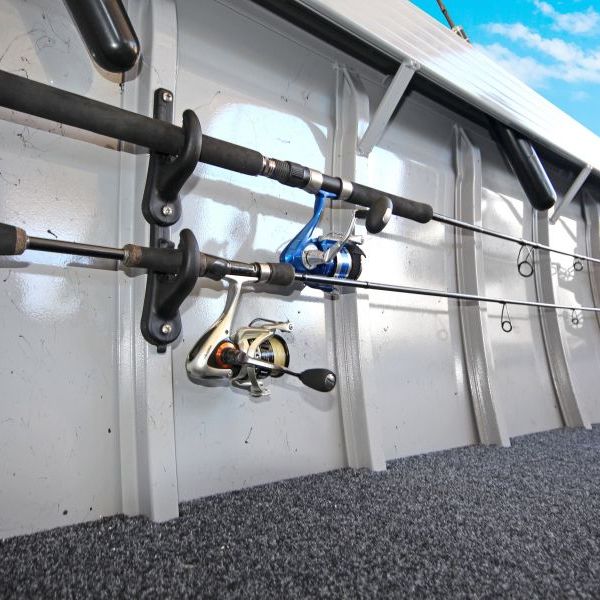 Conclusion
Conclusion
Mastering how to transport fishing rods is essential for any angler seeking to enjoy their passion without the stress of damaged gear. By choosing the right transportation method, utilizing essential tools and accessories, and following practical tips for safe and efficient travel, you can ensure that your fishing rods remain in pristine condition. Whether you’re traveling by car, plane, or public transportation, these strategies will help you transport your fishing rods with ease and confidence. Embrace these expert insights and enjoy your fishing adventures knowing your gear is well-protected and ready for action.